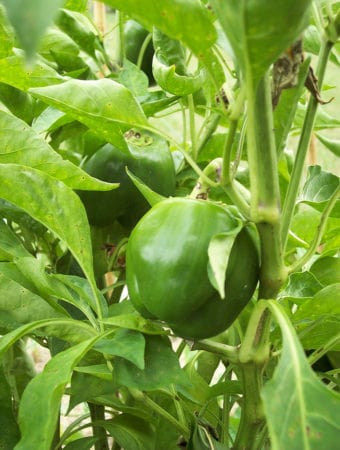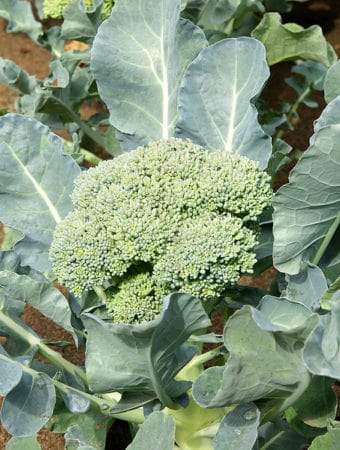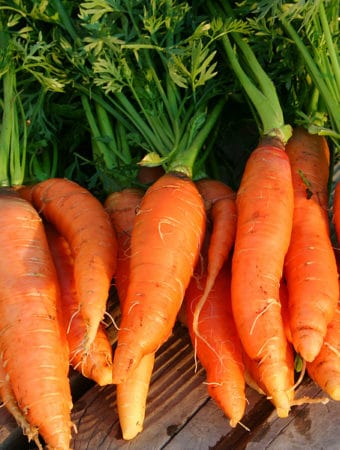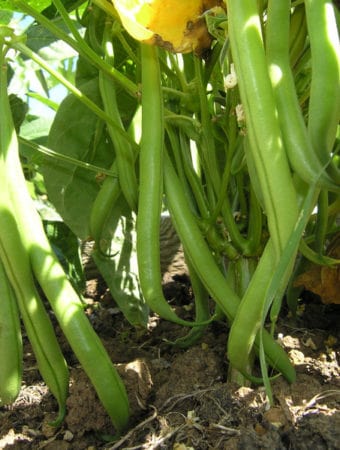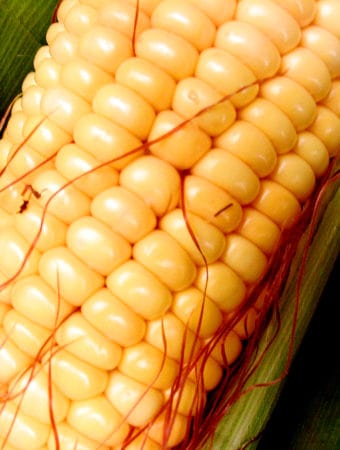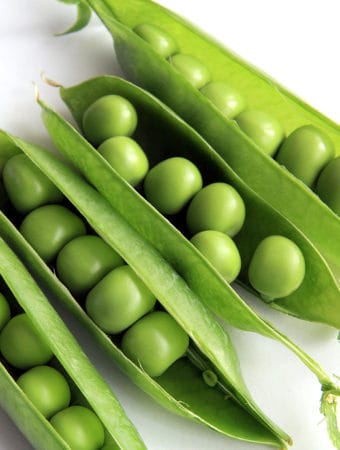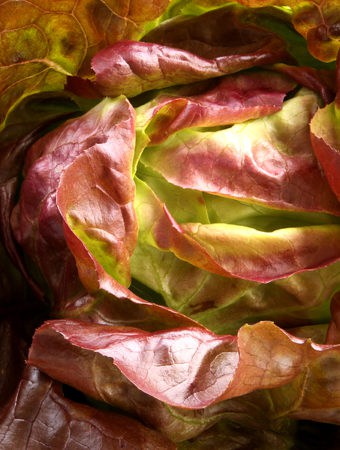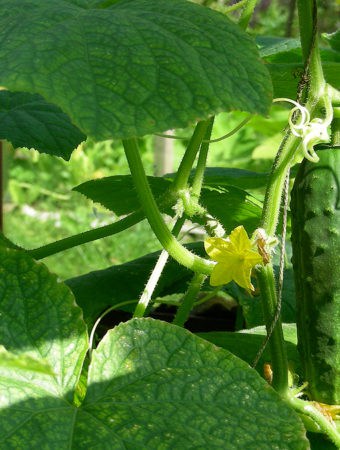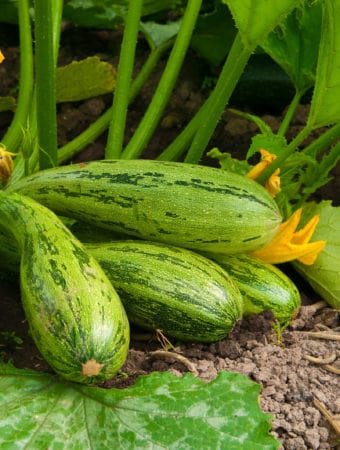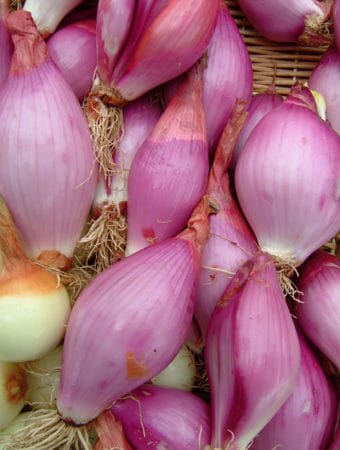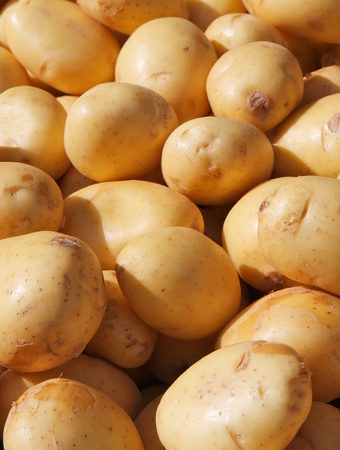The taste of arugula has been described as tangy, peppery, nutty, and mustard sharp. You get the picture: arugula is the “mild” transformer.
In Italian salads, arugula is often contrasted against red chicory and paler lettuces. In the mesclun salads originating in Provence, arugula is one of the zestier greens mixed with baby lettuces and herbs. In California, baby arugula is often mixed with other baby greens.
Young leaves are mild and can be eaten raw particularly if grown in a greenhouse or heavily irrigated. The longer arugula matures and soaks up the summer sun, the tangier it becomes. Late-season arugula can rival the hottest mustard. In fact, late summer arugula in Britain got the name “rocket salad” because the taste was nothing less than explosive.
For a taste of California cuisine: combine arugula, radicchio, diced red onion, chopped toasted walnuts, goat cheese, and a red wine vinaigrette.
Arugula’s flavor affinities include beets, goat cheese, mozzarella, nuts, olives, pancetta, pasta, roasted peppers, tomatoes, and vinaigrette. How is it that this little green can balance tastes that vary from sweet, to sharp, to salty, to rich, to acid, to bland? Perhaps it’s in the time of harvest.
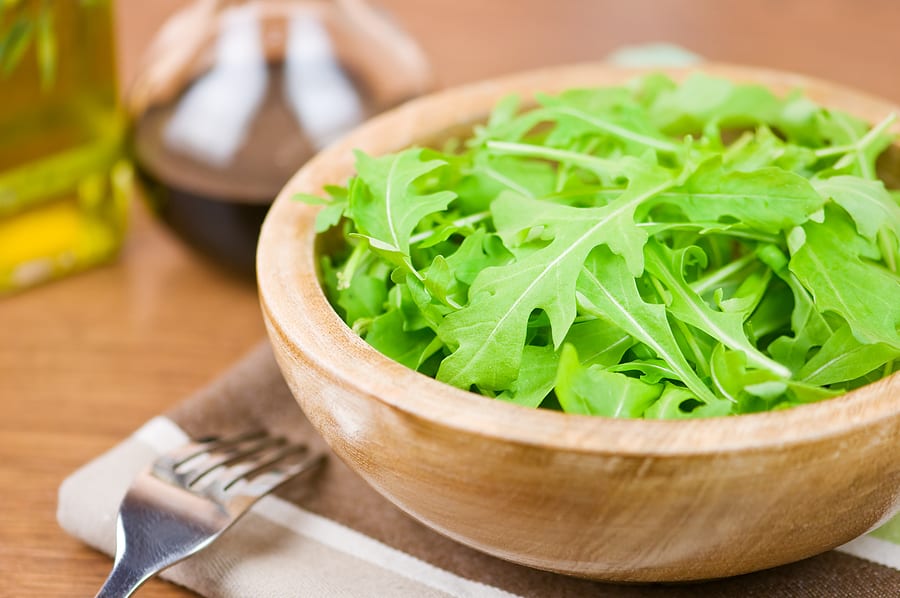
Arugula, young and tender, will have a nutty and slightly peppery flavor. Use arugula as a salad green alone or in combination with other greens.
In Italian salads, arugula is often combined with radicchio and paler lettuce. In the mesclun salads of Provence, arugula is one of the zestier greens mixed with baby lettuces and herbs. In California, baby arugula is often mixed with other baby greens.
Arugula is sometimes called rocket, maybe because it grows from seed to maturity so quickly. It’s a cool-weather green. You can sow it in late summer, cut several leaves in the fall, and let the plant sit through the winter—even under the snow. In the spring, the plant will take off and bolt—or set flowers.
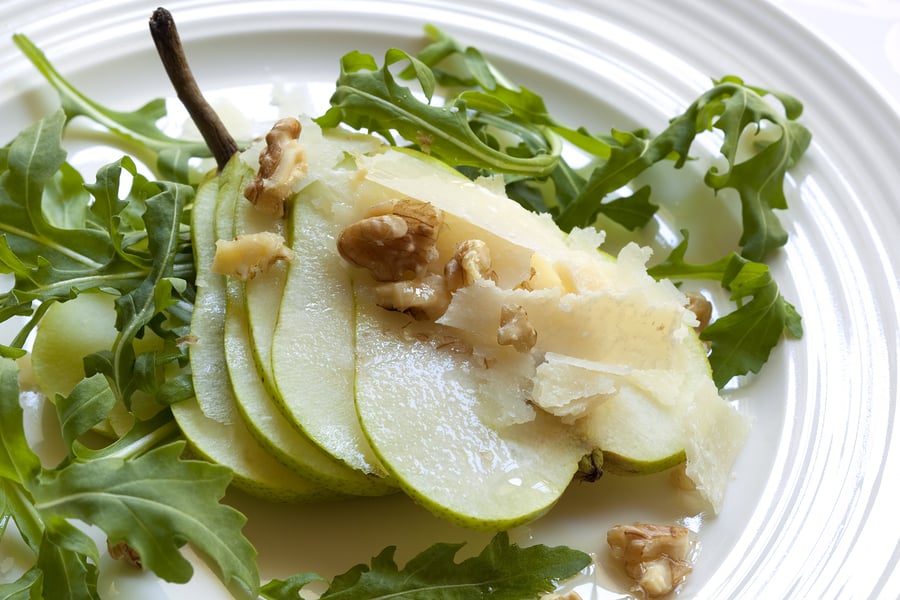
Arugula serving suggestions
- Arugula can be eaten raw or cooked.
- Add arugula to sandwiches.
- Use arugula as a seasoning in broths, salads, mayonnaise, sandwiches, potato salads, and pasta.
- Arugula also is used as a sandwich filling, and whole arugula leaves make a tasty last-minute addition to potato and lentil soups.
- For a taste of California cuisine: combine arugula, radicchio, diced red onion, chopped toasted walnuts, goat cheese, and a red wine vinaigrette.
- The leaves can be lightly boiled or steamed and added to stir-fries or sautéed in olive oil and tossed with pasta.
- Arugula flowers are edible and can be used to garnish salads.
- Thoroughly wash the arugula before using it to remove grit or sand from the folds of the leaves.
Arugula pesto
Purée arugula leaves with olive oil, garlic, pine nuts, and grated hard cheese to make a pesto that can be used as a dip for crudités, pasta sauce, or a sandwich spread.
Arugula salad
Serve arugula in a salad with roasted beets and baked goat cheese and a balsamic vinaigrette.
Arugula flowers
Arugula flowers bring the same peppery dash to a salad and some wonderful color as well. Arugula flowers are white pinwheels with burgundy center stripes and veins.
You can use arugula flowers as a salad or soup garnish. You can even mix them half and half with spring mesclun for a zesty side salad.
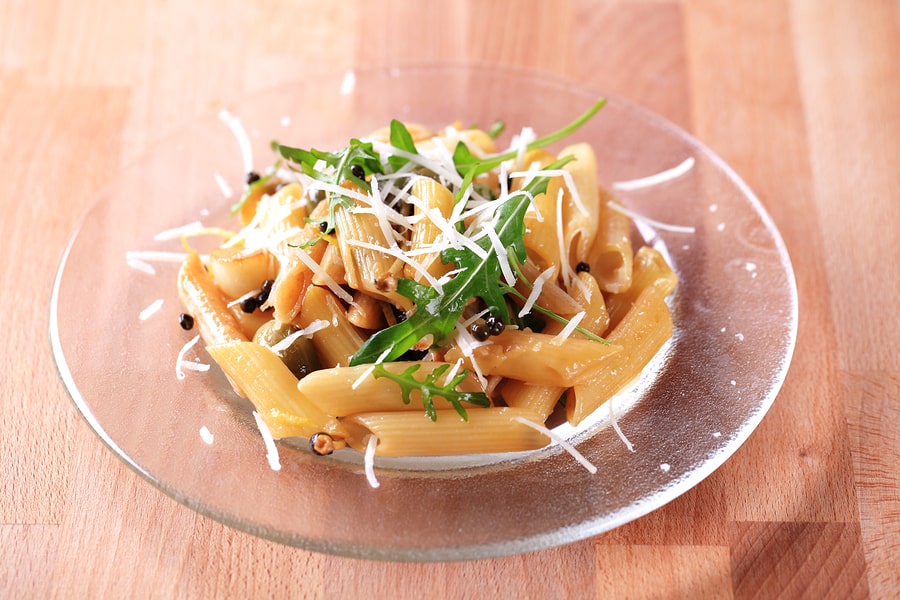
Arugula flavor partners
- The taste of arugula has been described as nutty, tangy, peppery, and mustard sharp. That’s because as arugula matures its taste grows hotter. Mature arugula should be used with discretion.
- Arugula has a flavor affinity for beets, goat cheese, mozzarella, nuts, olives, pancetta, pasta, roasted peppers, tomatoes, and vinaigrette.
Arugula harvest time
Arugula leaves grow in a ground-hugging rosette. From seed, arugula leaves are ready for harvest in 40 days. Successively plant arugula every two weeks and you will be set for the season. It’s best to be done with your arugula when the summer heat arrives.
Arugula leaves are best still young. As they mature they grow more piquant and if left in the garden too long will become hot. As the plant matures it sends up a sparsely branched stem with insignificant leaves that culminate in the flower. The mature arugula with its flowers aloft stands from 24 to 36 inches (61-91 cm) tall.
- Arugula seed can be sown from spring to summer and is ready for harvest in four to five weeks. It grows just about anywhere but prefers moist, fertile soil. Since it grows well undercover, a harvest need never be far off.
- Arugula comes to harvest in spring and again in late summer into autumn.
- You might find it under a few of its other names: garden rocket, rocket salad, rucchetta, rughetta, rucola (the Italian name), and roquette (the French name).
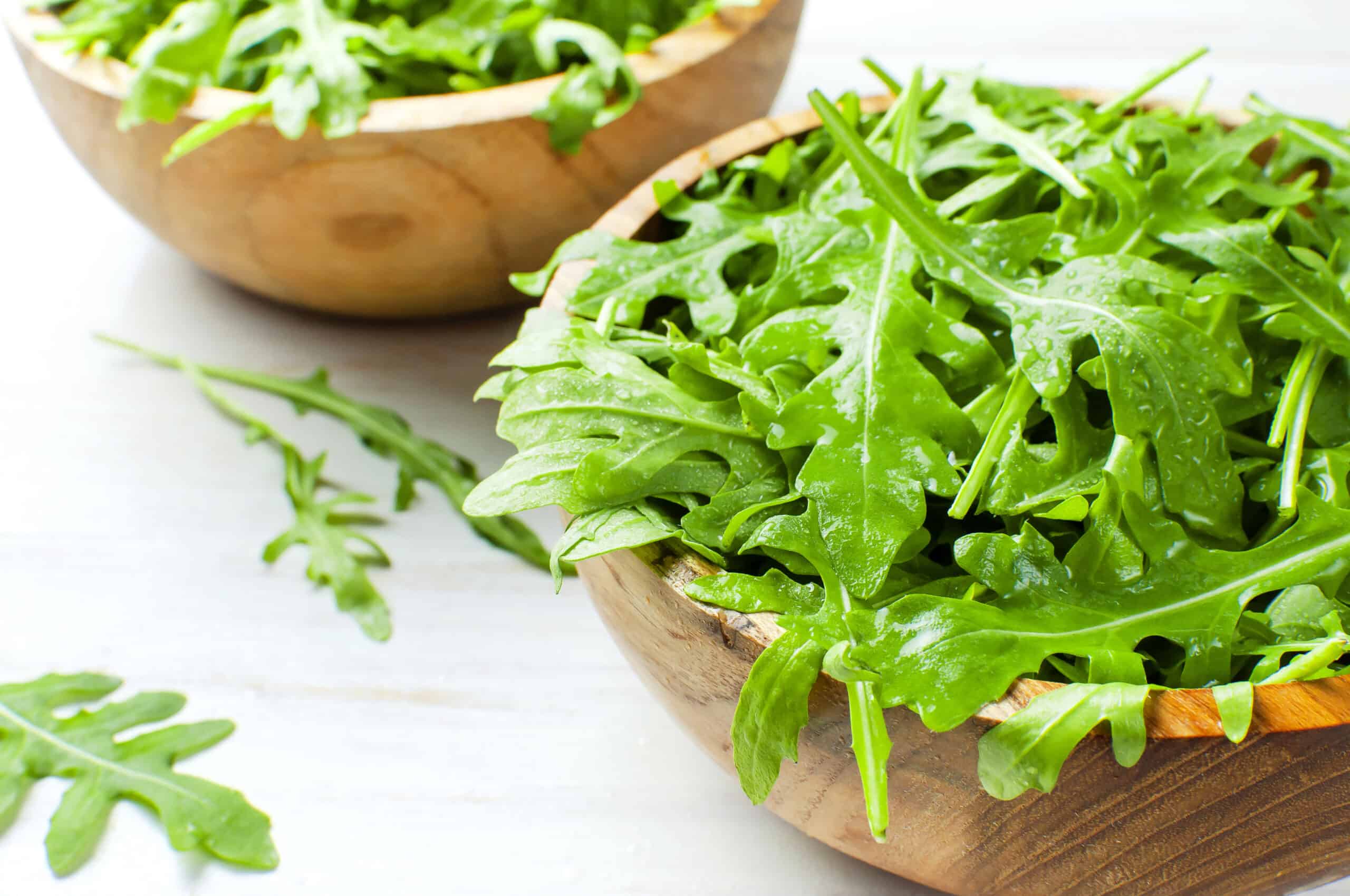
How to choose arugula
- Select arugula that is crisp and bright green.
- Choose leaves that are young and tender, harvested before the plant has bloomed.
- Avoid arugula that is limp or shows signs of yellowing or spotting.
Avoid leaves that are slimy.
How to store arugula
- Arugula can be loosely wrapped in a wet paper towel and placed in a plastic bag in the refrigerator for up to 3 days.
- Wash just before using and dry thoroughly.
Arugula nutrition
- Arugula is rich in iron and vitamins A and C.
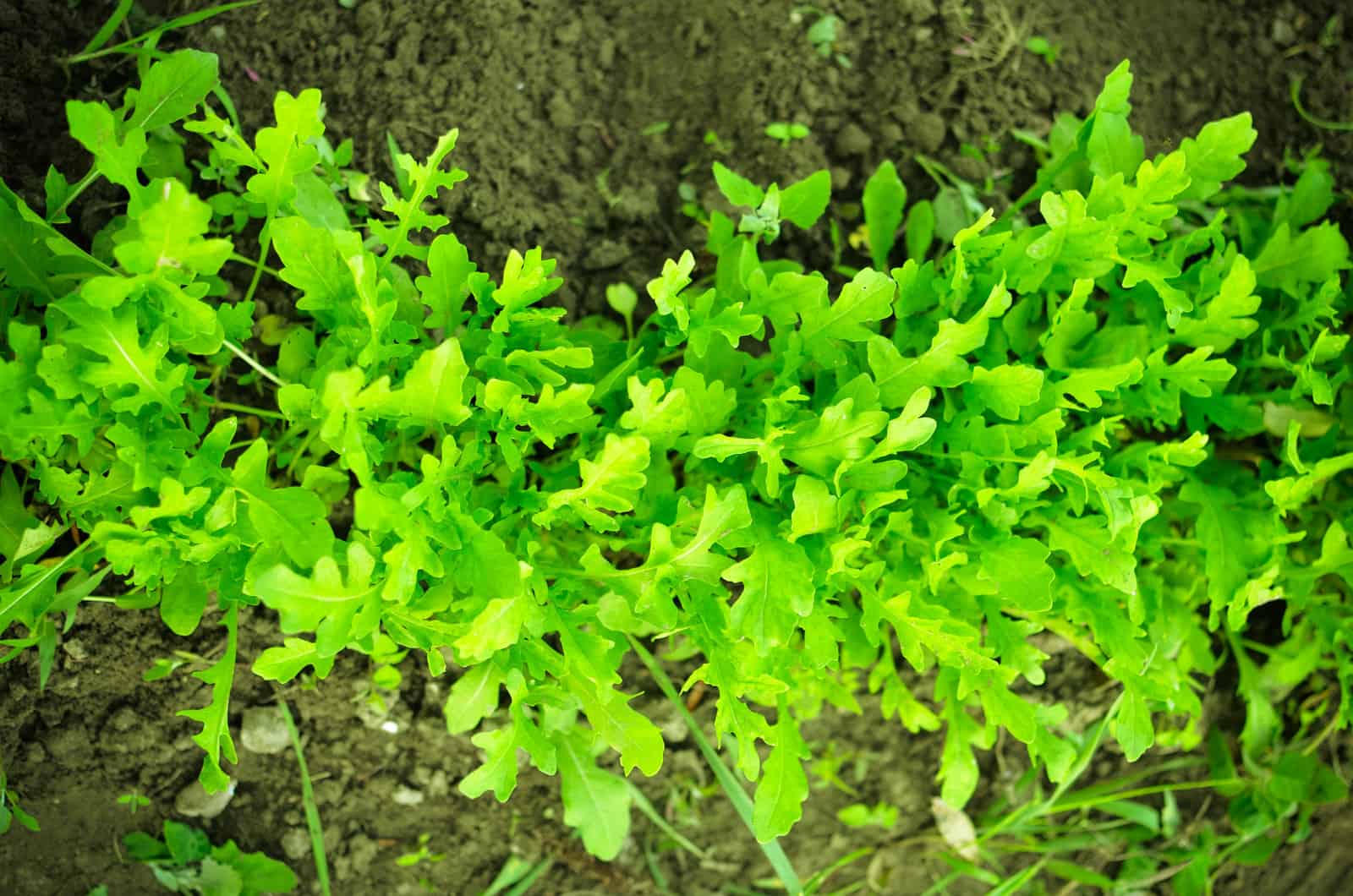
About arugula
- The deep green arugula leaf is slender, elongated, and multi-lobed and can resemble an oak or dandelion leaf at varying stages of maturity. Arugula seed can be sown from spring to summer and is ready for harvest in four to five weeks. It grows just about anywhere but prefers moist, fertile soil. Since it grows well under cover, a harvest need never be far off.
- Arugula leaves grow slender and elongated to about 2 to 3 inches (5-7.5 cm) long– and multi-lobed; it can resemble an oak or dandelion leaf at varying stages of maturity.
- Young arugula leaves—particularly those grown in a greenhouse with heavy irrigation—will be mild tasting.
- The longer arugula matures and soaks up the summer sun, the tangier it becomes.
- Late-season arugula can rival the hottest mustard; late-summer arugula in Britain got the name “rocket salad” because the taste was nothing less than explosive.
- Arugula is native to the Mediterranean region and Eastern Asia and has been in cultivation since ancient Roman times. Arugula was introduced to North America by Italian settlers.
- The botanical name for arugula is Eruca sativa.
Arugula articles at Harvest to Table:
How to Plant and Grow Arugula – Rocket
How to Harvest and Store Arugula
How to Prepare and Serve Arugula
Related articles:
Best Herbs for Container Growing
Garden Planning Books at Amazon:
- Vegetable Garden Almanac & Planner
- Kitchen Garden Grower’s Guide Vegetable Encyclopedia
- Vegetable Garden Grower’s Guide
- Tomato Grower’s Answer Book
More kitchen tips:
Bring your harvest to the table. Kitchen prep tips and easy recipes for the vegetables you grow. Click below for vegetable prep and recipes you can use now.
- Almonds
- Apples
- Apricot
- Aprium
- Artichoke
- Arugula
- Asparagus
- Avocado
- Bamboo Shoots
- Banana
- Basil
- Beans, Dried
- Beans. Long
- Beans, Shell
- Beans, Snap
- Beets
- Bitter Melon
- Blackberry
- Bok Choy
- Broccoli
- Broccoli Raab
- Brussels Sprouts
- Cabbage
- Cardoon
- Carrots
- Cauliflower
- Celeriac
- Celery
- Chard
- Chayote Squash
- Cherimoya
- Cherries
- Chestnut
- Chickpea
- Chinese Cabbage
- Chives
- Cilantro
- Citron
- Clementine
- Collards
- Coriander
- Corn, Sweet
- Corn, Baby
- Corn Salad, Mache
- Cranberry
- Cress
- Cucumber
- Daikon
- Dandelion
- Dill
- Eggplant
- Endive, Belgian
- Endive and Escarole
- Fava Beans
- Fig
- Florence Fennel
- Garlic
- Ginger
- Grapefruit
- Grapes
- Guava
- Horseradish
- Jerusalem Artichoke
- Jicama
- Jujube
- Kale
- Kiwifruit
- Kohlrabi
- Kumquat
- Leeks
- Lemongrass
- Lemons
- Lettuce
- Lime
- Mache (Corn Salad)
- Mandarin Orange
- Mango
- Maple Syrup
- Marjoram
- Melons
- Michihili
- Mint
- Mizuna
- Mushrooms
- Mushrooms, Cremini
- Mustard Greens
- Napa Cabbage
- Nectarine
- Okra
- Olives
- Olive oil
- Onions
- Oranges
- Oregano
- Parsley
- Parsley Root
- Parsnips
- Passion Fruit
- Pawpaw
- Peaches
- Pears
- Peas, Garden Snap
- Peas, Snow
- Pei Tsai
- Peppers, Chili
- Peppers, Sweet
- Persimmon
- Pineapple
- Pineapple Guava
- Plantain
- Plums
- Pluots
- Pomegranate
- Potatoes
- Prickly Pear
- Pumpkin
- Quince
- Radicchio
- Radishes
- Raspberries
- Rosemary
- Rhubarb
- Rutabaga
- Sage
- Salsify
- Sauerkraut
- Savory
- Shallots
- Sorrel
- Spinach
- Squash, Summer
- Squash, Winter
- Strawberries
- Sunchokes
- Sunflower
- Sweet Potato
- Swiss Chard
- Tangerine
- Taro
- Tarragon
- Thyme
- Tomatillo
- Tomato
- Turnip
- Turnip Greens
- Yams



